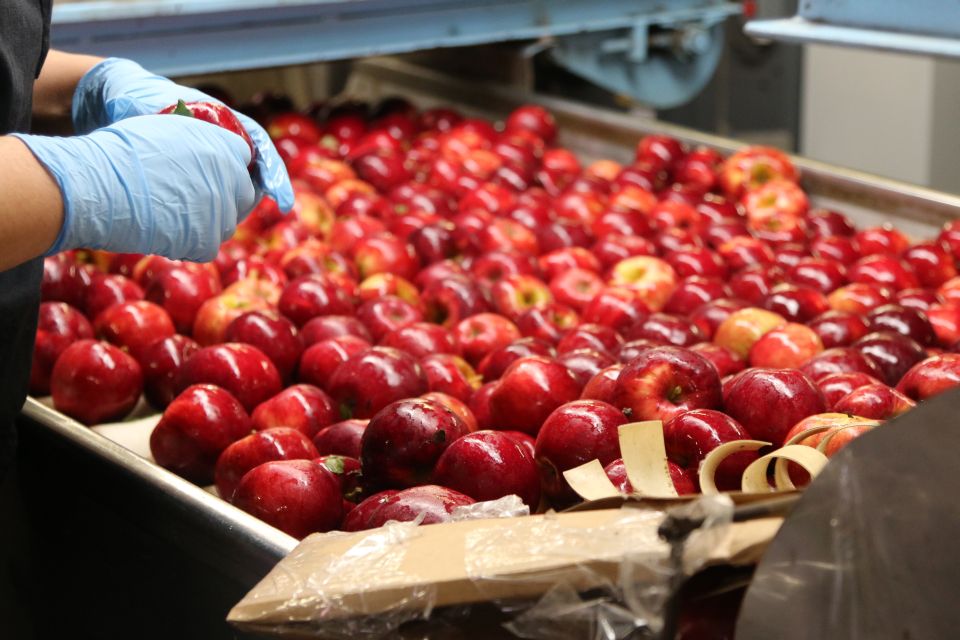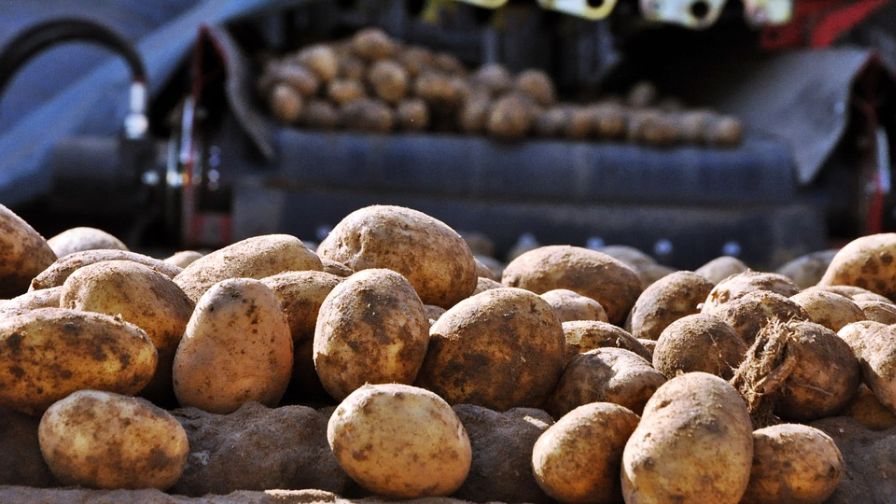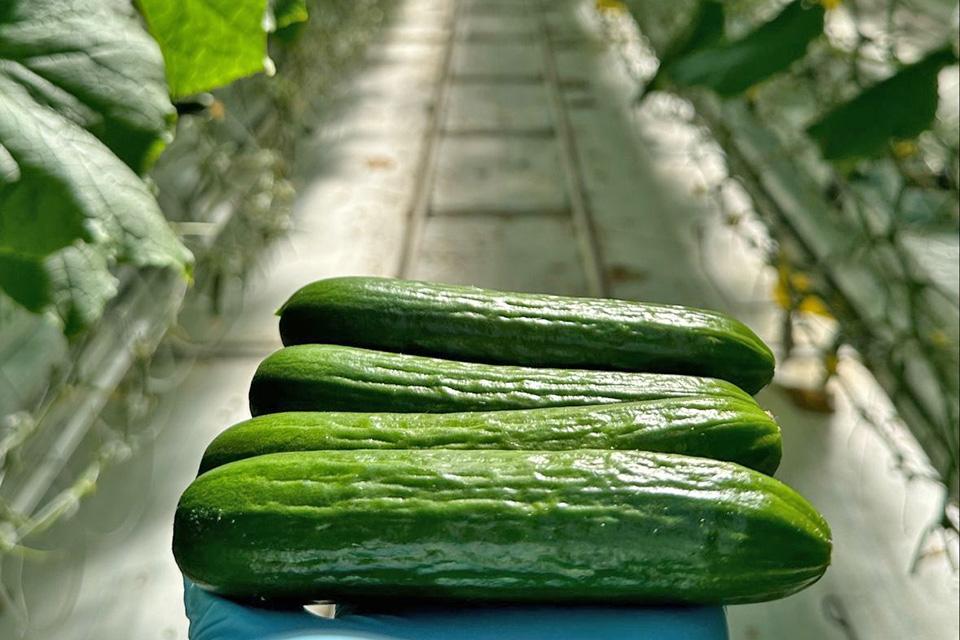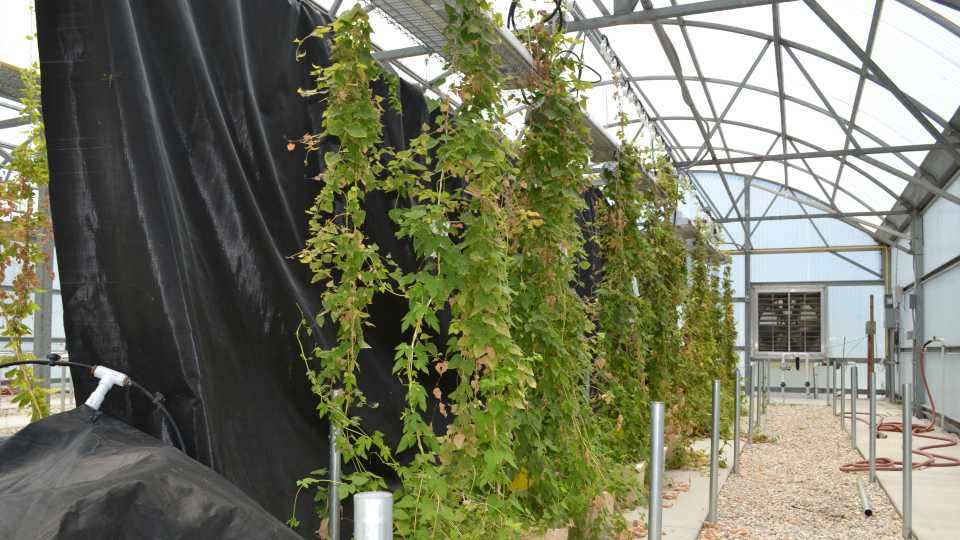New Cherry Packaging Looks Promising

Is it possible for a package of sweet cherries in the produce aisle to be appealing to the eye, environmentally friendly, and keep cherries fresh longer than other packages available on the market today? That is what a team of scientists is trying to find out. Slowing down the process of softening, flavor loss, incidence of decay, and stem browning are potential benefits of modified atmosphere packaging (MAP) in micro-perforated bio-based containers.
Researchers at Michigan State University’s (MSU) School of Packaging, Food Science, and Human Nutrition, and Horticulture departments led by Assistant Professor Eva Almenar are collaborating to develop a sustainable package to prolong the shelf life of sweet cherries during distribution and marketing in a USDA-Specialty Crop Research Initiative project led by Washington State University. The goal of this research is to develop compostable and recyclable packaging that prolongs the shelf life of sweet cherries during distribution and marketing. The experimental containers are necessary to reduce cherry water loss as well as respiration and microbial growth. Altering the gas mixture surrounding the cherries to a composition different from that of air may be an effective tool to prolong the cherry’s quality during distribution and marketing.
Almenar says bio-based containers may have valuable potential benefits for growers as well as consumers. “The compostability and biodegradability of the material could allow the grower to grow compost piles in the field and then compost their own packages,” she says, “In addition, the proposed packages extend shelf life and provide higher cherry quality at the retail point, thus offering a more appealing product to the consumer.”
Shielding Cherries
The idea is that O2 depletion and CO2 enhancement occurs in the package head space by the different rates of cherry respiration and the gas permeability of the package. The researchers are evaluating the effects of this modified atmosphere on fruit quality and the physico-chemical and microbiological changes that occur during storage. In addition, there are results showing reduced water loss in the package because it acts as a physical barrier and also reduces air movement across the produce surface.
Plastics are the most successful materials in reaching the needed gas balance and moisture content in the surrounding atmosphere of fresh produce. Currently, bio-based polymers are a viable alternative to petroleum-based ones for food packaging. For example, poly (lactic acid), or polylactide (PLA,) has many properties that make it attractive as a petroleum plastic substitute. PLA is biodegradable, compostable, made 100% from renewable resources, approved by USDA for contact with food, and has physical and mechanical properties similar to those of common petroleum-based plastics. In addition, PLA has a transparent and glossy finish that is appealing to the eye of the consumer.
“This project endeavors to impact the entire supply chain, including consumers and retailers,” says Matt Whiting, project director and associate professor & Extension specialist at Washington State University’s Irrigated Agriculture Research and Extension Center in Prosser, WA. “We are striving for the development of attractive, compostable packaging that extends shelf life and improves consumer appeal of the fruit,” he says. “This is crucial to reducing shrink at retail and increasing consumption of sweet cherries.”
Take The Survey
To date, Almenar has conducted experiments to assess the effect of packaging, temperature, and cherry variety on the shelf life and quality of fresh sweet cherries with or without stems. Three different packaging systems have been compared: (1) a rigid tray closed with a non-microperforated lidding material, both made from PLA; (2) a rigid tray closed with micro-perforated lidding material, both made from PLA; and (3) the current commercial (bag) package for sweet cherries.
Preliminary findings show the shelf life of a sweet cherry is notably affected by the type of package, the surrounding temperature, and the cherry variety (Skeena and Sweetheart were tested). Additional results show an increase in temperature from 3ºC to 10ºC (37.4ºF to 50ºF) reduced the shelf life of the packaged cherries by one week. In addition, the micro-perforated bio-based container reduced cherry weight loss by about 10% after three weeks of storage, and approximately the same fungal growth was observed in the cherries of the bio-based micro-perforated packages as cherries in current commercial packages. In the just-completed cherry harvest season, Almenar tested an improved package, and Janice Harte, an associate professor at MSU’s Department of Food Science and Human Nutrition, planned sensory tests of sweet cherries in the proposed new container.
Responses to a survey on consumer preferences for packaging of fresh cherries are also being sought. Anyone involved in the sweet cherry industry supply chain, including growers, packers, distributors, wholesalers, and retailers, are welcome to participate. For more information on this and other aspects of the Specialty Crop Research Initiative project, visit the project’s website at sweetcherryresearch.wsu.edu. To take the survey, click here.









